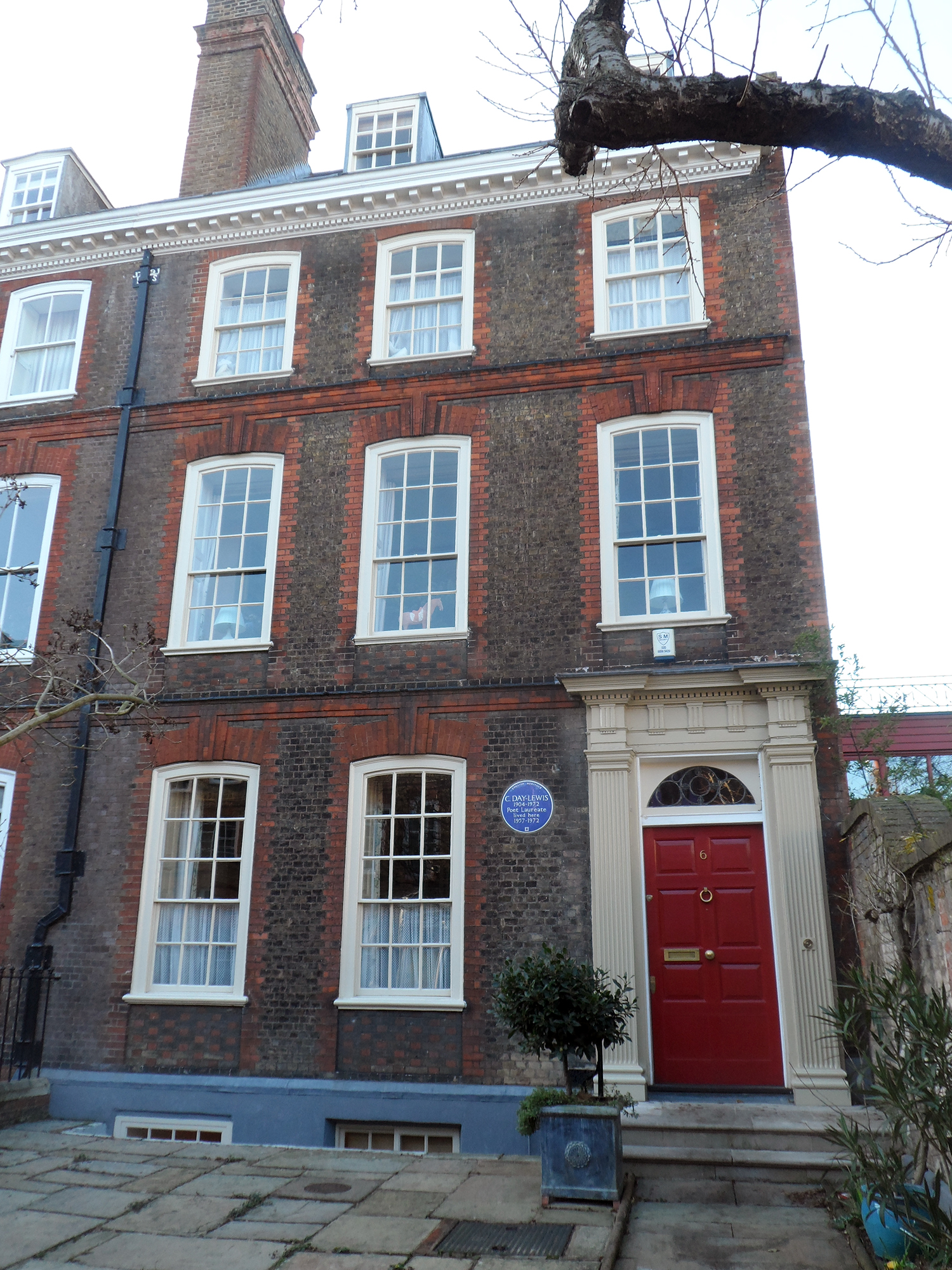There isn’t much else to say about Greenwich than to quote the old Greenwich Council signs – ‘Greenwich, Where Time Begins’. As anyone can attest to, time really does begin and disappear in Greenwich. Ralph Fiennes’ character Harry Waters from In Bruges talks of how Bruges is ‘a fairytale town, isn’t it?' and asks 'how’s a fairytale town not somebody’s f**cking thing?’ - the same can most certainly be said of Greenwich. If one travels from Deptford into Greenwich across Deptford Creek, you really feel a change. It’s as if the air changes. Curiously though, there is a lack of blue plaques in Greenwich town proper. There are more, in fact, in little Blackheath, just across the way, where many of the plaques are for individuals who worked in Greenwich. That said, Greenwich does have it's own set of blue plaques, and here is our list of them.
Cecil Day-Lewis - 6 croom's hill
Writer
The surname Day-Lewis is probably more famous for a certain multiple Oscar winner called Daniel, but it was on Croom’s Hill from 1957 to his death in 1982 that Daniel’s father Cecil lived, and Daniel grew up. Cecil was an Anglo-Irish poet who held the post of Poet Laureate from 1968 to 1972. He focused most of his time on academia while raising his family in Greenwich and confessed to enjoying solitary walks around Greenwich Park and Greenwich. It is very likely that his plaque will eventually be replaced for a shared one with his son Daniel at some point in the future.
Philip Dormer Stanhope, 4th Earl of Chesterfield +
Field Marshal Garnet Wolseley, 1st Viscount Wolseley – Ranger’s House, Chesterfield Walk
Two different tenants of arguably the grandest house in all of Greenwich, Chesterfield and Wolseley were rather different men from rather different times. Chesterfield was a classic eighteenth-century nobleman whose legacy is a collection of letters he wrote to his son which explained how a gentleman should act and behave. During his ownership, Chesterfield made extensive changes to the house, making the initial addition of one of the galleries, with a second being added to balance the house after his death. Wolseley moved to the house in 1888 upon the invitation of Queen Victoria after a long a distinguished military career throughout the Victorian era, serving in the Crimea, the Indian Mutiny, and the Second Opium War to name a few.
general james wolfe - macartney house, greenwich park
Soldier
Merging the topics of the previous two chaps, General James Wolfe was an eighteenth-century soldier famed for his honourable conduct. More famous across the pond in Canada, General James Wolfe is one of the reasons as to why English is the dominant language in Canada. Killed in the battle, it was Wolfe’s forces that took Quebec City off the French forces, essentially expelling the French from North America. However, despite this, the language and culture they left behind has prospered. Brought up in Greenwich, he continued to live in the area while making a name for himself in the service of the British Army, and his status is reflected in both his statue in Greenwich Park, and the famous painting The Death of General Wolfe.
benjamin waugh - 26 Croom's hill
Churchman
Hilariously, this plaque is actually on the wrong house. Greater London Council managed to put the plaque on 26 Croom’s Hill, rather than 62 Croom’s Hill, his actual residence. Easy mistake. The father of the NSPCC, Rev. Benjamin Waugh was shocked by the sights he saw while working as a Congregational Minister in the slums of Victorian Greenwich, and wrote a polemic entitled The Gaol Cradle, Who Rocks it in 1873. In it he argued for the establishment of juvenile courts and detention centres in an attempt to help children avoid becoming entrapped in lives supported by criminality. A few years after he would go onto found the NSPCC.
what is the south london club card?
The South London Club is a local discount card to help support small independent businesses across South London whilst saving all who live, work & play in South London money! With over 500+ local discounts to choose from, you will discover & explore all the best hidden gems in South London. Join over 4,000 of us & celebrate all that's independent in South London!












